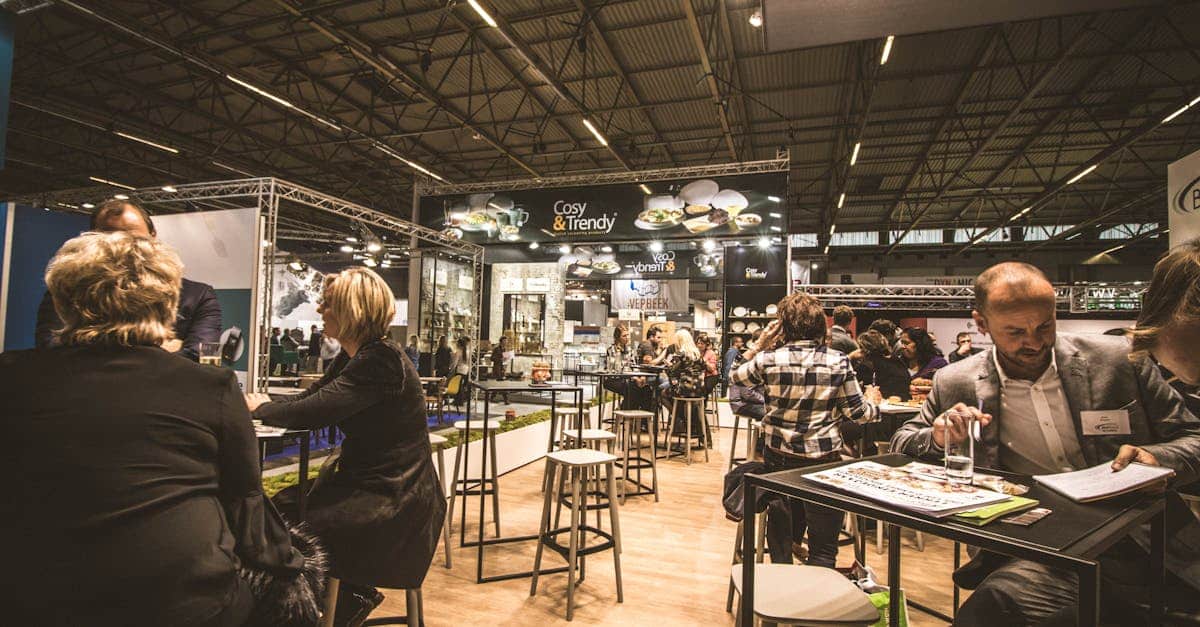Hello, my name is Véronique, I am 36 years old and I am an Executive Coach.
Passionate about personal and professional development, I help leaders and teams realize their full potential.
My tailored approach combines listening, expertise, and innovative tools to promote growth and performance.
Today, despite the rise of digital, some traditional tools continue to prove their value. Business cards are a perfect example. They remain an effective means of communication in the modern business world.
1. A professional code
The business card represents a professional code. It immediately conveys an image of seriousness and competence to your clients. Starting with a well-designed business card can greatly influence the first impression you leave.
2. Leave your mark
A business card is the tangible proof of your company’s business identity. It allows you to leave a physical mark with your clients and prospects, thus ensuring ongoing promotion of your brand.
3. A tool for differentiation
Each business card is unique and personalized, which helps you stand out from your competitors. An original and quality design reflects the values of your company and attracts attention positively.
4. Provide important information
The business card effectively communicates essential information about your activity, your location, and your contact details. This facilitates prospecting by quickly providing answers to your prospects’ main questions.
5. Better prospecting to retain customers
Used during the first contact, the business card is an ideal tool for prospecting and customer retention. It helps clients remember you and facilitates future contacts.
6. Quickly capitalize on your network
Networking is crucial for the development of your business. A neat and clean business card is an effective communication tool to quickly establish partnerships and expand your professional network.
7. Connect with other communication supports
The business card acts as a gateway to all your communication. Adding QR codes allows prospects to easily access your website and learn more about your services.
8. To support your speech with a tangible aid
It complements your presentation pitch by providing tangible support that details your activity. A well-designed business card reinforces the coherence of your message and leaves a lasting impression.
In summary, business cards remain an essential communication tool for any business. They guarantee a quality image and facilitate effective communication with your clients and prospects.
In the age of all-digital, some might think that business cards have become obsolete. However, they retain an essential role in the business world. Let’s explore why these small communication tools continue to hold great importance and how they can boost your professional networking.
Why continue using business cards?
With the rising power of digital contacts, it is legitimate to wonder if business cards still have their place. The answer is a resounding yes. Business cards offer a tangibility that virtual exchanges cannot reproduce. They allow for leaving a lasting and professional impression, thus facilitating business meetings.
By distributing a business card, you instantly convey key information about your professional identity. It is a quick and effective way to share your contact details without the need to enter them manually. Moreover, a well-designed card reflects your company’s image, thereby strengthening your personal brand.
The professional advantages of business cards
Business cards offer several significant advantages in the professional context. They serve not only as communication support but also as proof of your presence and seriousness. Here are some reasons why investing in quality business cards is still relevant:
- Increased credibility: A well-designed card enhances your professional image and shows that you take your career seriously.
- Tangible memory: Unlike ephemeral digital exchanges, a business card is a physical object that your contacts can keep and refer to later.
- Ease of sharing: Distributing a business card at networking events allows for quick sharing of your information without relying on technology.
To learn more about the importance of digital networking vs in-person, check out our dedicated article.
How to create an effective business card
Creating an effective business card requires particular attention to detail. Here are some key elements to consider when designing a card that stands out:
Design and aesthetics
Your card design should reflect your professional identity. Use colors and fonts that align with your brand and that catch the eye. An overloaded card can be counterproductive, so prioritize a clean and readable design.
Essential information
Include only essential information such as your name, your position, your contact details, and your company logo. Make sure this information is up to date and easy to read. A well-structured business card facilitates memorization and future contact.
To learn how to create a memorable networking pitch, check out our complete guide.
Integrating business cards with digital tools
Although business cards are traditional, they can be perfectly integrated with modern digital tools. For example, adding QR codes to your cards allows recipients to scan and directly access your LinkedIn profile or your website.
This combination of the tangible and the digital enriches the contact experience and facilitates follow-up. Digital business cards are also an emerging trend, offering interactive features while maintaining the visual appeal of traditional cards.
Discover our networking strategies for introverts to maximize the impact of your business cards in a digital context.
The impact of business cards on customer retention
Business cards are not only used to establish first contact; they also play a crucial role in retaining your clientele. By providing a well-designed card, you facilitate reconnection with your clients, which can lead to repeated and lasting collaborations.
When your clients have your contact details readily available, they are more likely to reach out to you for future projects or services. Furthermore, a quality business card can serve as a constant reminder of your presence and professionalism, thus strengthening clients’ trust and loyalty.
To delve deeper into how a good inspirational reflection can influence your client relationship, check out our latest reflection.
Case studies: success through business cards
Many companies have successfully boosted their professional network and increased sales through the strategic use of business cards. One notable example is Tech Innovators, which designed interactive business cards with QR codes leading to online product demonstrations. This approach not only attracted the attention of new prospects but also facilitated ongoing engagement with existing clients.
Another notable case is Creative Solutions, which invested in business cards with a unique and memorable design. Each card had a personal touch based on the recipient, thus creating a stronger connection and increasing follow-up rates after networking events.
These examples highlight the importance of innovation and personalization in the design of business cards. To learn more about how to capitalize on your network, explore our resources.
Current trends in business cards
Business cards are constantly evolving to adapt to new market trends and technological advancements. Currently, several trends stand out:
- Eco-friendly cards: With a growing environmental awareness, more and more professionals are opting for cards made from recycled or sustainable materials.
- Minimalist design: A clean and simple design conveys essential information without distracting the recipient.
- Integrated technology: The integration of QR codes or NFC chips makes it easy to connect physical cards to digital platforms.
These trends show that business cards remain a flexible and adaptable tool, capable of meeting the changing needs of professionals.
Tips to maximize the effectiveness of your business cards
To get the most out of your business cards, here are some practical tips:
- Quality over quantity: Invest in quality materials and a neat design to ensure your card stands out.
- Clarity of information: Ensure all important information is clearly visible and easy to read.
- Personalization: Tailor your card according to your audience or the event you are attending to maximize impact.
By following these tips, you can transform each professional interaction into a potential opportunity for growth and success.
For advanced strategies on creating a memorable networking pitch, check out our specialized articles.
The future of business cards
As the world continues to digitalize, the future of business cards looks promising thanks to innovation and technological integration. Hybrid business cards, combining physical and digital elements, offer a new dimension to professional exchanges.
Moreover, with the rise of technologies such as augmented reality and interactive interfaces, business cards may offer more immersive and engaging experiences. These advancements allow professionals to stand out further and create more meaningful connections with their contacts.
In conclusion, business cards are not just surviving in the digital age; they are adapting and evolving to continue playing a crucial role in professional networking.
Discover our inspirational reflections to stay at the forefront of trends and maximize the effectiveness of your communication tools.
“`html
Frequently Asked Questions about the Power of Business Cards in the Digital Age
Q: Why should I still use business cards in the digital age?
A: Business cards offer a tangible physical presence that enhances professional credibility and facilitates personal connections, thereby complementing digital tools.
Q: How can a business card improve my professional image?
A: A well-designed business card reflects the professionalism and values of your company, leaving a lasting impression on your clients and prospects.
Q: What essential elements should be included on a business card?
A: Include your name, your position, the company name, contact details, and possibly a QR code to direct people to your website or social media.
Q: Are business cards a good tool for networking?
A: Yes, they facilitate quick sharing of information and help leave a memorable trace during networking events.
Q: How can I personalize my business card to make it stand out?
A: Use a unique design, quality materials, colors that represent your brand, and integrate innovative elements like QR codes or special finishes.
Q: Is it important to have business cards for an online business?
A: Absolutely, they reinforce the physical presence of your brand and can be used during in-person meetings, even for predominantly online businesses.
Q: How long should I keep my business cards?
A: It is advisable to renew your business cards every year or when your contact information changes, in order to always provide up-to-date information.
Q: Can business cards be integrated with digital tools?
A: Yes, by adding QR codes or using NFC technologies, you can link your business cards to your online profiles or website.











